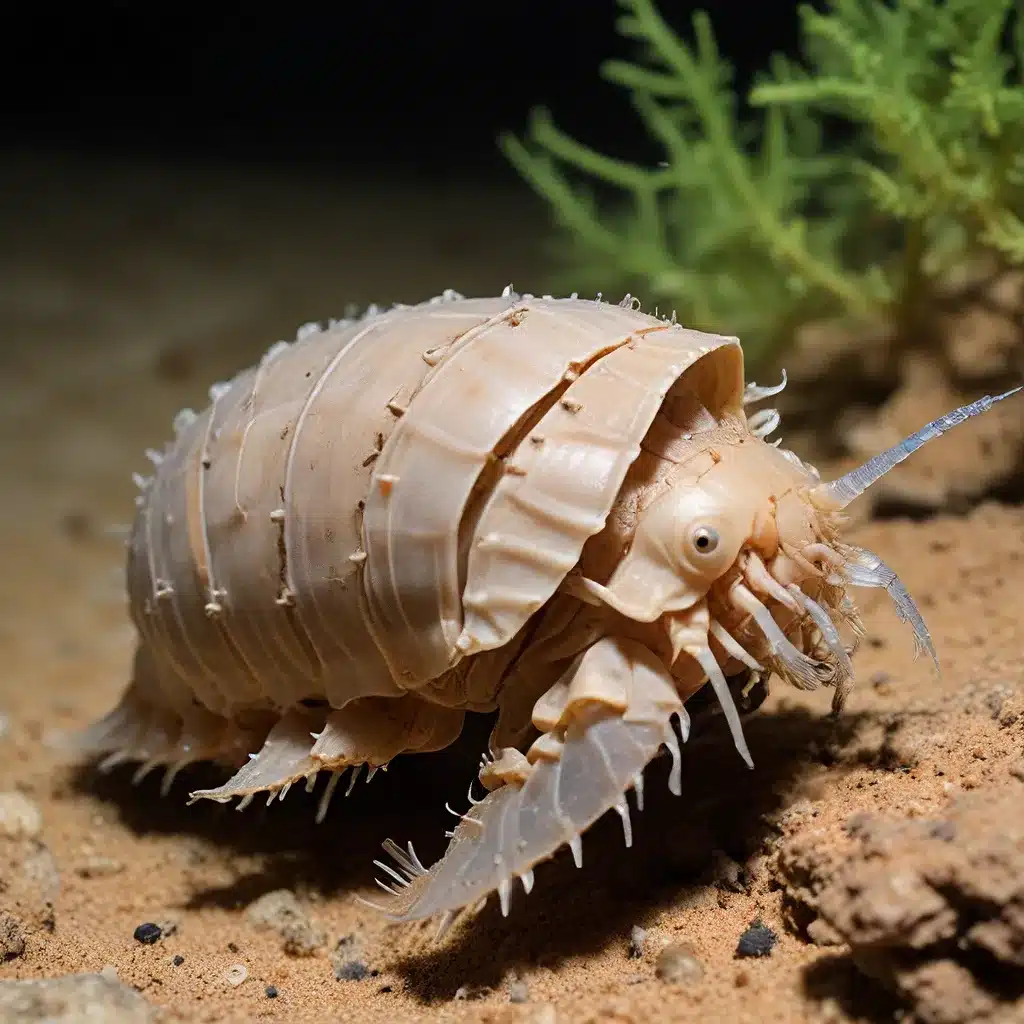
Unraveling the Mystery of Aquatic Arthropods
Beneath the shimmering waters of our oceans and aquariums lies a realm teeming with life, home to an array of fascinating aquatic arthropods. While insects are typically associated with terrestrial environments, a diverse selection of these resilient creatures have evolved remarkable adaptations to thrive in the marine realm. From the enigmatic sea spiders to the ubiquitous isopods, these aquatic arthropods continue to captivate scientists and hobbyists alike.
In this comprehensive exploration, we’ll delve into the unique world of aquatic arthropods, uncovering their intriguing adaptations, ecological roles, and potential applications in the aquarium hobby. By understanding the intricate web of life that exists beneath the waves, we can develop a deeper appreciation for the remarkable diversity and resilience of these aquatic wonders.
Amphipods: The Agile “Sea Fleas”
One of the most intriguing groups of aquatic arthropods is the amphipods, often referred to as “sea fleas.” Despite their name, these tiny crustaceans are not true fleas, but rather distant relatives of shrimp and crabs. Amphipods display a remarkable variety of shapes and sizes, ranging from microscopic species to those several centimeters in length.
These agile creatures inhabit a wide range of marine habitats, from the depths of the ocean floor to the shallows along coastlines. Their diverse morphologies and behaviors allow them to thrive in these varied environments, playing crucial roles as scavengers and decomposers within the aquatic ecosystem.
Isopods: Versatile Aquatic Scavengers
Another captivating group of aquatic arthropods is the isopods, often referred to as “sea lice.” Like amphipods, isopods are crustaceans with a diverse array of shapes, sizes, and behaviors. While some isopods are free-swimming, others are parasitic, attaching themselves to fish and other marine organisms.
Despite their notorious reputation as pests in aquaculture and commercial fisheries, isopods play an essential role in marine ecosystems as scavengers and decomposers. These adaptable creatures can help maintain water quality and nutrient cycling by breaking down organic matter, making them an intriguing prospect for aquarium enthusiasts.
Sea Spiders: Enigmatic Aquatic Arachnids
Yet another fascinating group of aquatic arthropods is the sea spiders, belonging to the class Pycnogonida. Despite their name, sea spiders are not true spiders, but rather distant relatives of their terrestrial counterparts. These enigmatic creatures possess elongated bodies and delicate, spindly legs, allowing them to navigate the complex marine environments with ease.
Sea spiders can be found across a range of depths, from the shallow coastal waters to the abyssal depths of the deep sea. Their unique adaptations and relatively unexplored nature continue to captivate scientists and nature enthusiasts alike, offering valuable insights into the intricate web of life that thrives beneath the waves.
Aquarium Applications and Considerations
The study of aquatic arthropods, such as amphipods, isopods, and sea spiders, can hold significant value for the aquarium hobbyist community. These remarkable creatures can play crucial roles in maintaining the delicate balance of an aquatic ecosystem, contributing to water quality, nutrient cycling, and overall system stability.
For instance, incorporating isopods into a balanced aquarium setup can help with the decomposition of organic matter, reducing the build-up of detritus and improving overall water parameters. Similarly, amphipods can serve as a valuable food source for various fish species, providing a natural and sustainable source of nutrition.
When considering the inclusion of aquatic arthropods in an aquarium, it’s essential to research the specific species, their habitat requirements, and any potential compatibility concerns. Some isopod species, for example, may be considered pests in certain aquarium setups, while others can thrive as part of a well-designed ecosystem.
By understanding the unique adaptations and ecological roles of these aquatic arthropods, aquarium enthusiasts can incorporate them into their setups in a responsible and sustainable manner, enhancing the overall health and biodiversity of their aquatic environments.
Sustainable Aquascaping and Water Management
The integration of aquatic arthropods into aquarium setups is just one aspect of the holistic approach to aquarium care. Sustainable aquascaping and meticulous water management are equally crucial in maintaining a thriving, long-lasting aquatic ecosystem.
King Aquarium, a leading authority in the aquarium hobby, emphasizes the importance of creating naturalistic, balanced aquascapes that mimic the intricate dynamics of natural aquatic habitats. By carefully selecting appropriate plant species, incorporating natural hardscaping elements, and optimizing lighting and nutrient levels, aquarists can foster environments that not only captivate the eye but also provide the necessary conditions for a diverse array of aquatic life to thrive.
Alongside the art of aquascaping, meticulous water management is crucial for the long-term health and stability of an aquarium. This includes regular water testing, targeted water changes, and the implementation of advanced filtration systems to maintain optimal water parameters. By staying vigilant and proactively addressing any water quality issues, aquarists can ensure the well-being of their aquatic inhabitants, including the fascinating aquatic arthropods that may inhabit their setups.
Unlocking the Secrets of the Aquatic Realm
The world of aquatic arthropods is a testament to the incredible diversity and adaptability of life on our planet. From the agile amphipods to the enigmatic sea spiders, these remarkable creatures have evolved remarkable strategies to thrive in the marine environment, offering insights into the intricate web of life that sustains our aquatic ecosystems.
By exploring the fascinating adaptations and ecological roles of these aquatic arthropods, aquarium enthusiasts can develop a deeper appreciation for the delicate balance that underpins the health and stability of their aquarium setups. Through the incorporation of sustainable aquascaping techniques and diligent water management, aquarists can create vibrant, thriving aquatic environments that support a diverse array of aquatic life, including the captivating aquatic arthropods that continue to inspire wonder and curiosity.
As our understanding of marine biodiversity deepens, the study of aquatic arthropods will undoubtedly continue to yield valuable insights, inspiring awe and guiding us towards a more harmonious coexistence with the remarkable world that lies beneath the shimmering surface of our aquatic realms.

